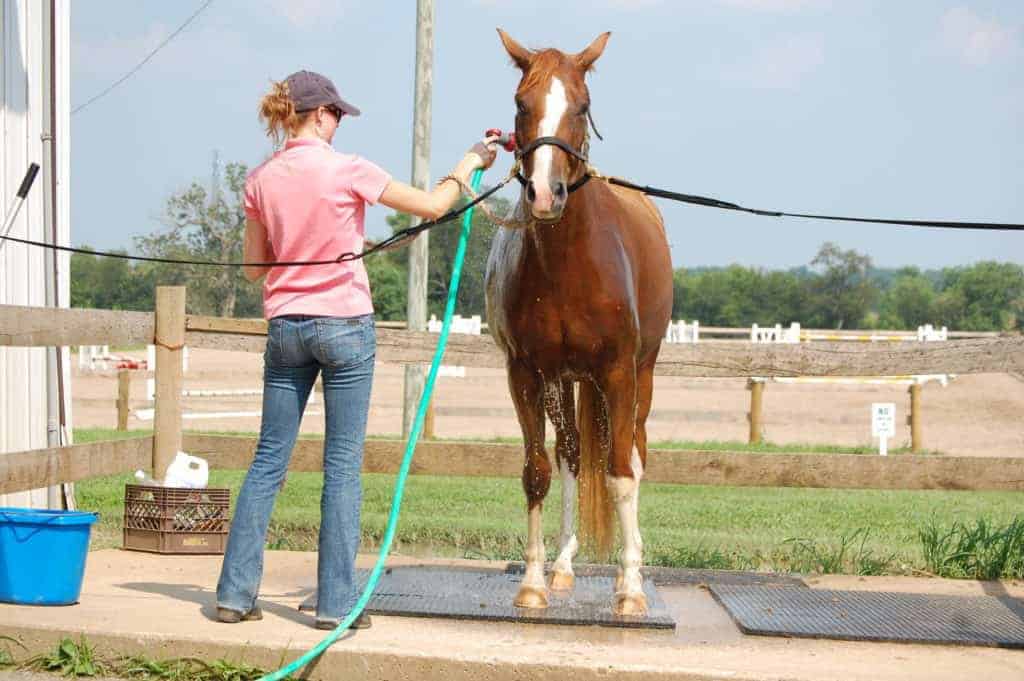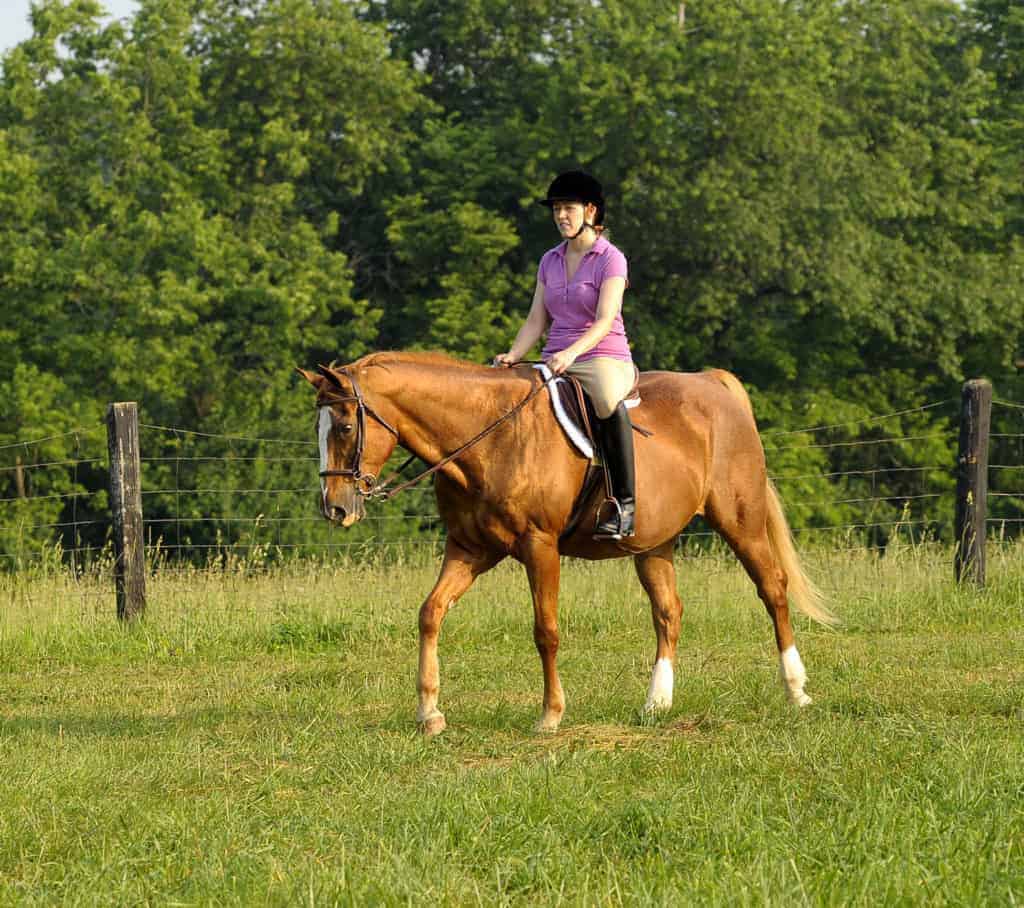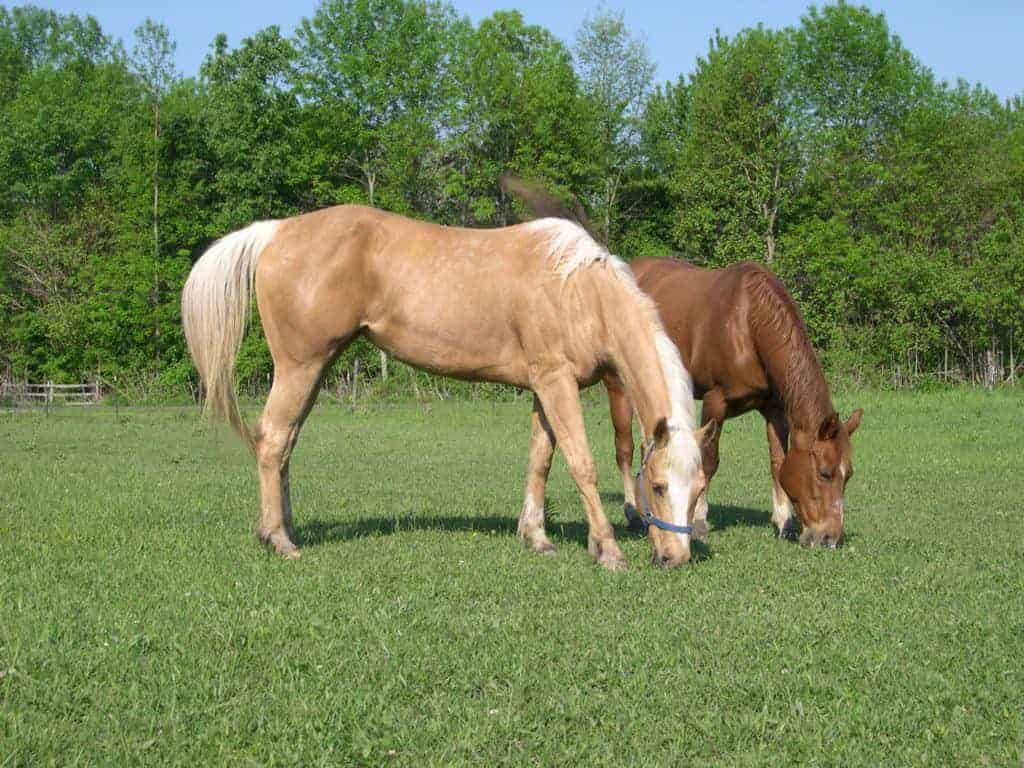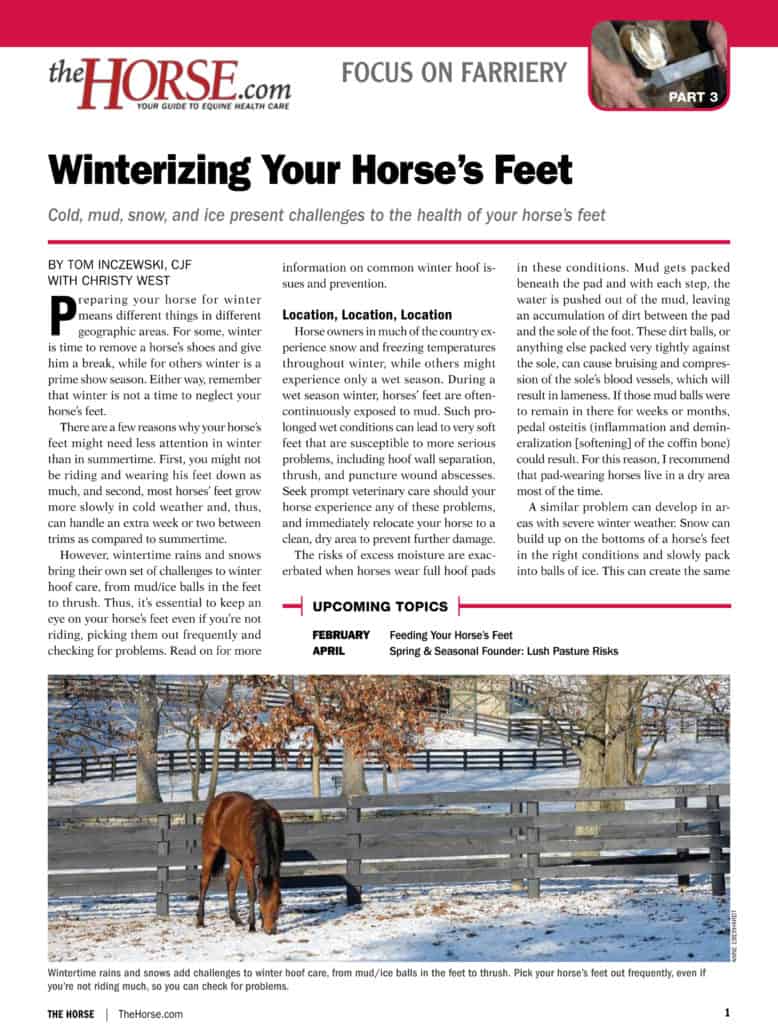Prepare Horse Shelters Now for Winter
Now is the ideal time to address housing options for horses that will live outside this winter.
Now is the ideal time to address housing options for horses that will live outside this winter.
Ensure vehicles are ready for winter driving and maintain them according to manufacturer recommendations.
The BLM’s upcoming schedule for gathering wild horses and burros from overpopulated herds was released Oct. 7.
Fall is the time to prepare for winter–and that includes preparing your horses for the colder weather, too.

For riding enthusiasts, summertime necessitates paying extra attention to your horse’s physical needs.

Senior horses have a propensity for developing hyperthermia, or elevated body temperature, when exercising.
Proper electrolyte balance and hydration should be a main priority for horse owners. In stressful situations,

Assess your geographic region, plant species, soil, and plant stand to help maintain your pastures’ (and your horses’) health.
Kentucky’s livestock are dealing with heat stress conditions earlier than usual.
Horse can develop anhidrosis, or non-sweating, at any point in their life, regardless of breed, age, or sex. Horses living in hot and humid climates are known to be at greater risk. The Sanctuary Equine Sports Therapy & Rehabilitation Center, located

By providing swallows with nest boxes, you can help their populations increase and make a huge dent in the numbers of insects around your property this summer.

Dr. Pamela Wilkins offers recommendations for horse safety in extreme winter conditions, including providing shelter, warm water, and protecting older horses.
Cold winds and changing winter weather might not seem like contributing factors for equine colic; however, these conditions can foster changes in routine and eating habits that could affect your horse’s well-being.

Preparing your horse for winter means different things in different geographic areas. For some, winter is time to remove a horse’s shoes and give him a break, while for others winter is a prime show season.
Kentucky is in the throes of an early season arctic blast that could cause problems for livestock operations. A blast of arctic air recently filtered into the lower Ohio Valley, resulting in highs only in the 20s for most Kentucky locations. These temperatures combined with gusty winds causes an extended period of livestock cold stress in the danger and emergency categories.
Winter can be a difficult time for pasture management. Horse pastures often are abused by the stress of winter, especially following a drought. Here are a few simple steps you can follow to minimize winter damage and help plant growth for grazing.
Stay on top of the most recent Horse Health news with
"*" indicates required fields